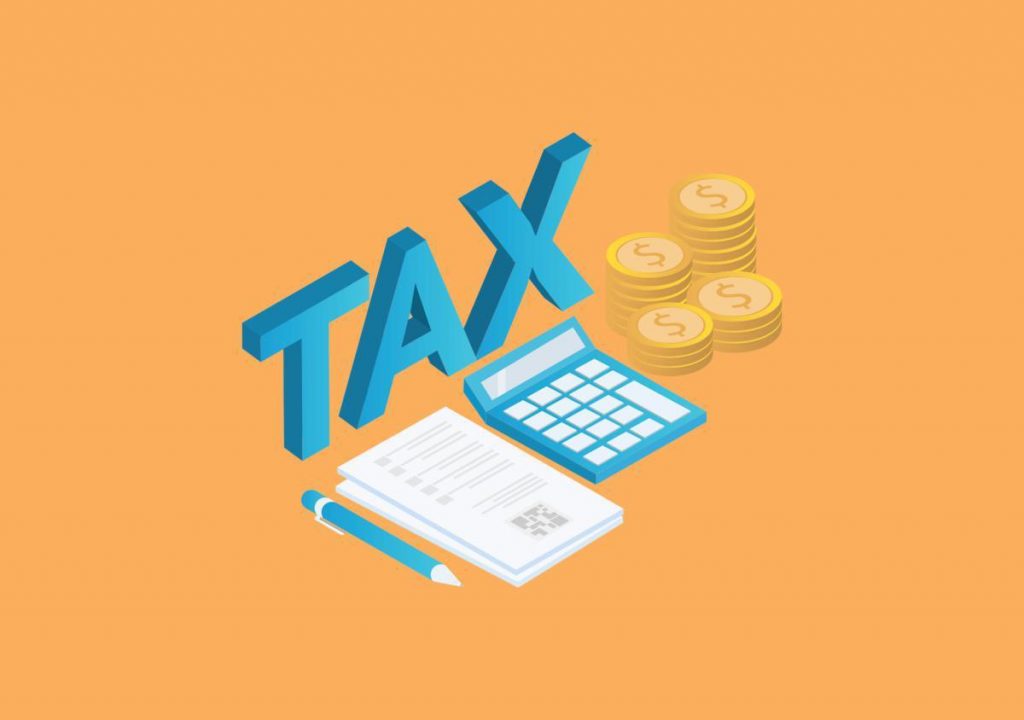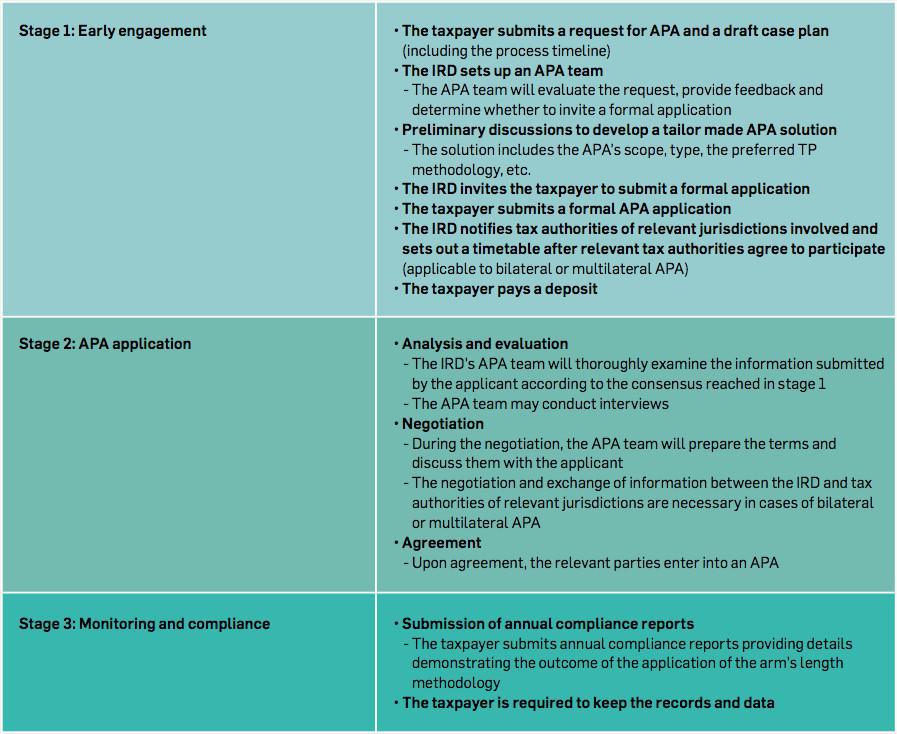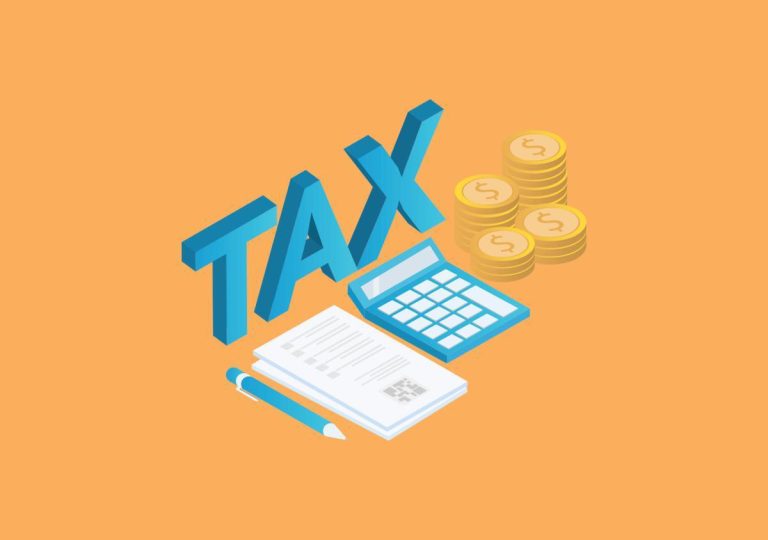With the enactment of the Inland Revenue (Amendment) (No. 6) Ordinance 2018 (BEPS and TP ordinance), the transfer pricing (TP) regime in Hong Kong has become more rigorous. Under the BEPS and TP ordinance, the Inland Revenue Department (IRD) is empowered to impose TP adjustments on either income or expense arising from non-arm’s length transactions between associated persons that give rise to a potential Hong Kong tax advantage. Taxpayers may face a penalty up to the amount of tax undercharged.
Echoing the BEPS and TP ordinance, the Departmental Interpretation and Practice Notes (DIPN) No. 48 Advance Pricing Arrangement (APA) issued in 2012 has been revised (revised DIPN 48) to provide more guidance for taxpayers on the procedures and requirements to pursue APAs. The APA programme facilitates efficient management of controlled transactions and allows taxpayers to communicate with tax authority in a non-adversarial manner. It can also help to reduce unnecessary costs relating to tax audits and enhance certainty pertaining to controlled transactions.
Overall, the revised DIPN 48 ensures a more streamlined, transparent and efficient APA application process for taxpayers. Key changes include the following:
- Unilateral APAs are now accepted, in addition to bilateral and multilateral APAs, allowing taxpayers to enter into APAs with the IRD in relation to transactions with non-double taxation agreement (non-DTA) jurisdictions;
- The three-stage process will replace the former five-stage process, which will streamline the procedures and improve efficiency in concluding an APA. The level of documentation required at the early stage under the new procedures will be reduced, which represents more flexibility and may reduce the time taken to conclude an APA;
- The coverage of APAs has been extended to include the attribution of profits to a permanent establishment in Hong Kong, and the relevant thresholds for APA applications have also been provided; and
- The rollback of the TP methodology under bilateral and multilateral APAs is available, as such tax audit/TP inquiry of past years may be resolved with less penalty pressure.
Types and covered period of APA
An APA is an arrangement concluded between a taxpayer and one or more tax authority that determines, in advance, an appropriate set of criteria (e.g. method, comparables and appropriate adjustments thereto, critical assumptions as to future events etc.) for determination of the TP for controlled transactions. Depending on the number of jurisdictions involved and whether the jurisdiction(s) have signed a DTA with Hong Kong, taxpayers may consider a unilateral, bilateral or multilateral APA.
The revised DIPN states that “In general, an APA will have a prospective application with a specific duration of three to five years.”
Thresholds of APA applications
APA applications are subject to the following thresholds based on the expected amount of each category of transactions. The applications relate to:
a) Sales or purchases of goods: HK$80 million per annum;
b) Service fees: HK$40 million per annum;
c) Royalties: HK$20 million per annum;
d) Business profits for an APA application relates to the attribution of profits to a permanent establishment in Hong Kong: HK$20 million per annum; or
e) An APA application relates to transactions not falling within the categories (a) to (d) listed above: HK$20 million per annum.
The above thresholds for sales or purchases of goods and other transactions are lower than the applicable thresholds for preparing Hong Kong TP documentation, suggesting that taxpayers who are not required to prepare TP documentation may qualify for an APA application. The revised DIPN 48 also expands the scope of APA applications to include the attribution of profits to a Hong Kong permanent establishment, the application threshold in relation to which is also specified, corresponding to the permanent establishment articles in the BEPS and TP ordinance. The IRD will review the application thresholds from time to time and may lower the corresponding thresholds based on the actual circumstances.
The three-stage APA application process
The APA application process has been revised from five to three stages, which aims to streamline the overall process. The new stage 1 “Early engagement” is the combination of the previous stage 1 “Pre-filing” and stage 2 “Formal application,” which has reduced the information required to be submitted at an early stage. This minimizes the resources required for taxpayers before the IRD accepts the formal application. The new stage 2 “APA application” combines the previous stage 3“ Analysis and evaluation” and stage 4 “Negotiation and agreement”, thereby improving the efficiency and effectiveness of the negotiation process.
The revised DIPN 48 provides a tentative timeframe for the early engagement stage which is six months and for the APA application stage which is 18 months. The timeframe for bilateral and multilateral APAs, however, depends on the progress of negotiations with the competent authority(ies) of the DTA jurisdiction(s). In new stage 1, the APA team and the applicant will agree on an initial case plan – including the timeline for the whole process. This allows both parties to plan sufficient resources for negotiation and cooperation, improving the efficiency of the subsequent stages. The APA application process is summarized in the table below.
Summary of the APA application process
“More likely” to qualify for an APA
The revised DIPN 48 states that the IRD will consider all the relevant facts and circumstances of each APA application. It also includes “more likely” or “less likely” circumstances when the IRD will consider entering into an APA. If one or more of the following indicators are present, the chance of entering into an APA with the IRD will improve accordingly:
- The TP methodology adopted under the proposed APA best achieves consistency with the Organization for Economic Cooperation and Development’s TP guidelines;
- The controlled transactions covered by the proposed APA have already been entered into and are unlikely to change significantly in the period covered;
- A proposed arrangement is under serious contemplation and the proposed actual provisions are unlikely to change significantly in the period covered;
- The TP issues are complex and there is uncertainty as to how the TP rules apply;
- Without an APA, the probability of double taxation is high.
Rollback
When the signed APA provides a reasonable pricing basis for prior years’ TP issues, the pricing methodology in the APA can be applied to prior years (i.e. rollback).
The Commissioner of Inland Revenue will consider requests for rollback in the case of bilateral and multilateral APAs. The commissioner will treat as a voluntary disclosure any amendment to prior years arising from rollback if certain conditions are satisfied and the relevant penalty may be reduced.
Renewal
If a person having an APA concluded wishes to request for a renewal of the APA, the request must be submitted at least six months before the expiration of the APA. The renewal process can be streamlined if there are no material changes to the role of the Hong Kong entity(ies) within the global value chain and the controlled transactions over the course of the period of the renewed APA, and when there are no proposed changes to the existing terms.
Fees
APA applicants bear the APA application fees, which include: a service charge based on actual hours spent by the IRD’s APA team with a cap of HK$500,000; the payment or reimbursement of the fees paid by the commissioner to an independent expert; and other costs and expenses incurred. A deposit must be paid to the IRD prior to the formal application.
The takeaway
In the context of the current international tax environment, an APA has become an increasingly useful tool for multinational enterprises (MNEs) to gain tax certainty. In view of a more rigorous TP regime in Hong Kong and heightened transparency of tax information, there are increasing cases of tax controversy. The current environment drives a stronger need for MNEs to adopt a proactive tax strategy to manage tax uncertainties.
APAs can be particularly useful for taxpayers under the following situations:
- For taxpayers already facing potential risks arising from TP arrangements in Hong Kong or other tax jurisdictions – they could avoid or reduce double taxation by entering into an APA with tax authority(ies);
- For taxpayers who have already achieved settlement in a tax audit – since the IRD has already obtained thorough understanding of the facts and circumstances of the controlled transaction and the TP methodology should have been agreed, the APA process can be largely streamlined;
- For taxpayers who have TP risks in prior years – the rollback of an APA can be an alternative to resolve TP disputes, enabling taxpayers and tax authority(ies) to resolve TP issues in a non-adversarial manner;
- In respect of business restructuring that involves TP policy changes, tax certainty can be obtained through an APA;
- Controlled transactions that are complicated and involve relatively high TP risks.
The revised DIPN 48 reflects the IRD’s commitment to develop the APA programme in Hong Kong in line with the broader international taxation developments. The previous five-stage process is replaced by a three-stage process, resulting in a new APA process that is more flexible, transparent and collaborative.
The revised DIPN 48 includes indicators of “more likely” or “less likely” cases to enter into an APA, providing clear guidelines for taxpayers to assess their applications. In addition, the revised DIPN 48 clarifies the expectation and considerations of the IRD on APA applications, which facilitates taxpayers to evaluate the feasibility of a potential APA before initiating applications. The involvement of the IRD to establish and agree on an initial case plan with taxpayers at the early stage, as well as setting out the expected timeframe for the early engagement stage and the APA application stage (i.e. six months and 18 months respectively) are conducive to both parties effectively managing the application process.
Substantial information disclosure requirements and technical discussions throughout the APA process may present challenges to potential applicants. It is therefore recommended to carefully plan ahead the adequate resources and seek professional advice when appropriate. This way, applicants can fully optimize the opportunity and improve efficiency and chance of success.
This article is contributed by Cecilia Lee, Transfer Pricing Leader, Wengee Poon, Transfer Pricing Partner, and Tiffany Wu, Transfer Pricing Partner at PwC Hong Kong.
















